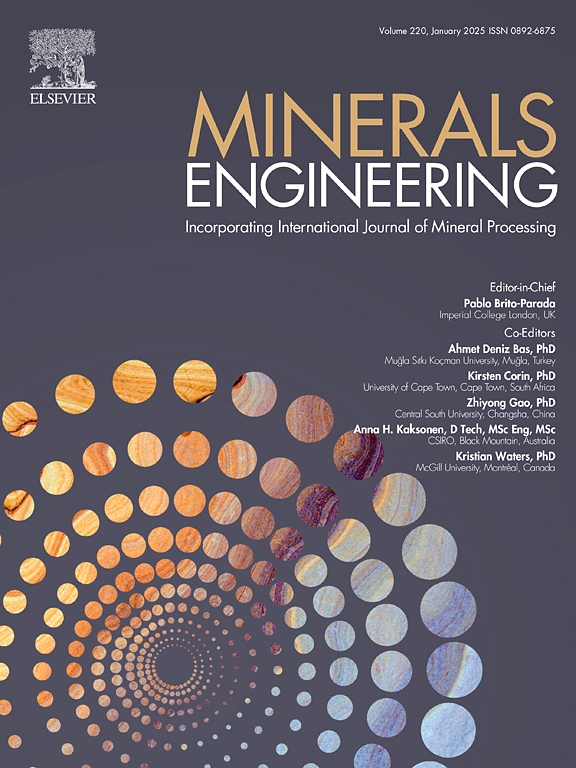Effect of the difference in adsorption of DL-2-amino-3-mercaptopropionic acid on the surfaces of jamesonite and pyrite on flotation separation
IF 4.9
2区 工程技术
Q1 ENGINEERING, CHEMICAL
引用次数: 0
Abstract
Conventional flotations for separating jamesonite and pyrite employ cyanide as a pyrite flotation inhibitor, leading to significant environmental concerns. In this study, density functional theory calculations were utilized to investigate the differences in the adsorption of DL-2-amino-3-mercaptopropionic acid (DL) on jamesonite and pyrite surfaces. The potential of DL as a pyrite flotation inhibitor was assessed based on atomic coordination, spatial alignment, and orbital compatibility, which was subsequently corroborated by experimental data. Findings indicated that the Fe sites on the jamesonite surface were constrained by steric effects, rendering them challenging for inhibitor adsorption. Effective adsorption of flotation inhibitors on mineral surfaces necessitates meeting both spatial and orbital requirements. Although the Pb and Sb sites on the surface fulfilled the spatial criteria for inhibitor adsorption, strong adsorption was hindered by orbital mismatch. In contrast, pyrite satisfied the spatial criteria for inhibitor adsorption, where the t and e orbitals, derived from the Fe2+ d orbital, formed σ-bonding and π-backbonding with DL. This was validated by pure mineral flotation and time-of-flight secondary-ion mass spectrometry. Results of this study considerably demonstrate the potential of DL, fulfilling both spatial and orbital requirements, as a promising pyrite flotation inhibitor for the flotation separation of jamesonite and pyrite.
求助全文
约1分钟内获得全文
求助全文
来源期刊

Minerals Engineering
工程技术-工程:化工
CiteScore
8.70
自引率
18.80%
发文量
519
审稿时长
81 days
期刊介绍:
The purpose of the journal is to provide for the rapid publication of topical papers featuring the latest developments in the allied fields of mineral processing and extractive metallurgy. Its wide ranging coverage of research and practical (operating) topics includes physical separation methods, such as comminution, flotation concentration and dewatering, chemical methods such as bio-, hydro-, and electro-metallurgy, analytical techniques, process control, simulation and instrumentation, and mineralogical aspects of processing. Environmental issues, particularly those pertaining to sustainable development, will also be strongly covered.
 求助内容:
求助内容: 应助结果提醒方式:
应助结果提醒方式:


